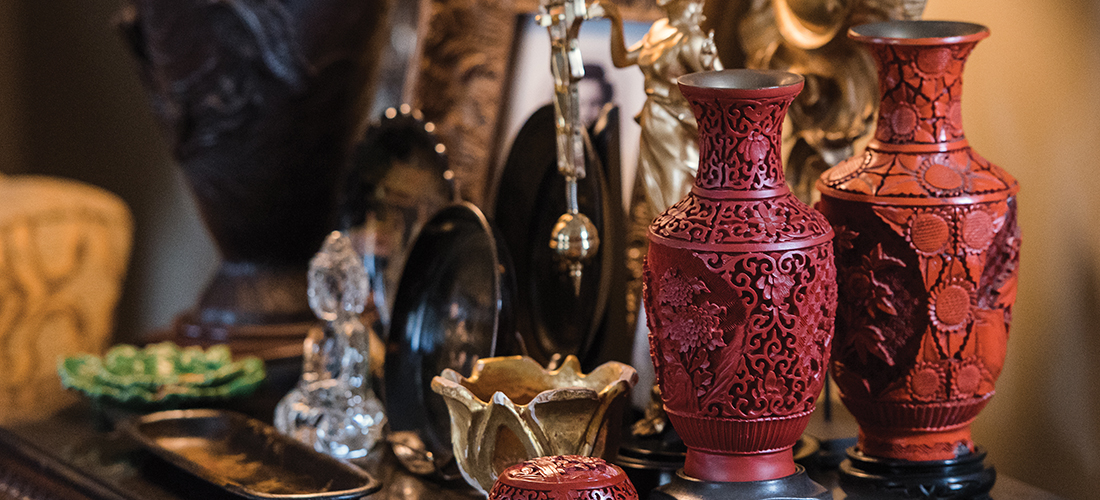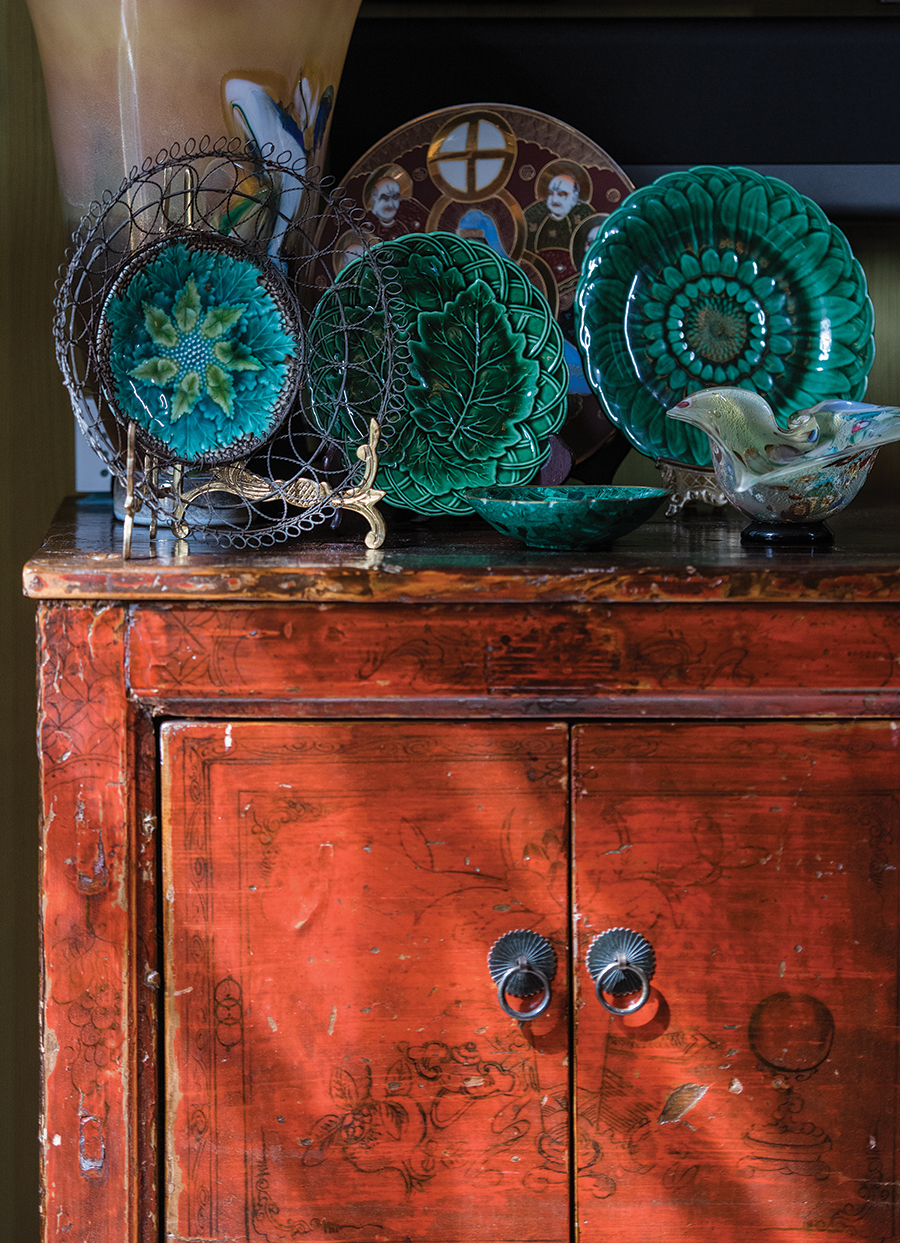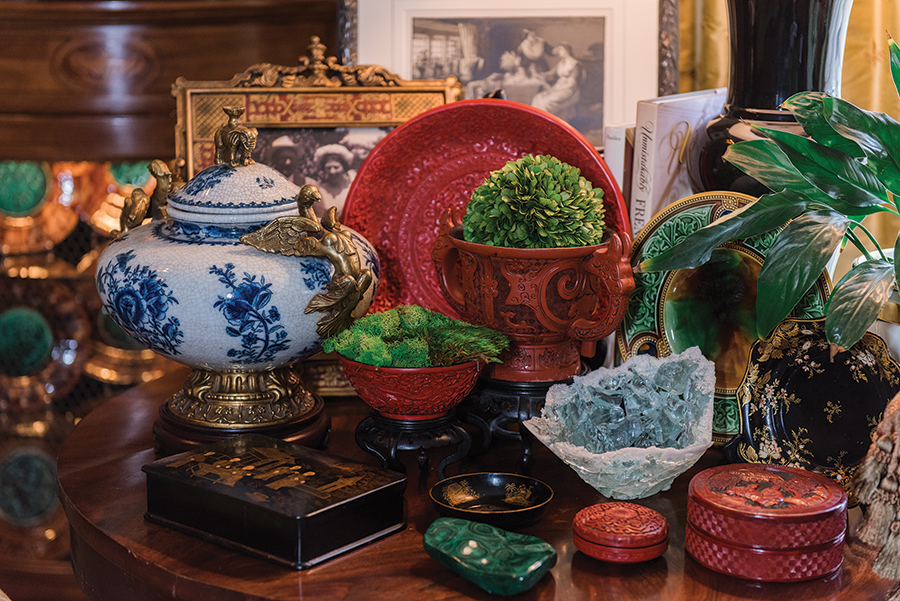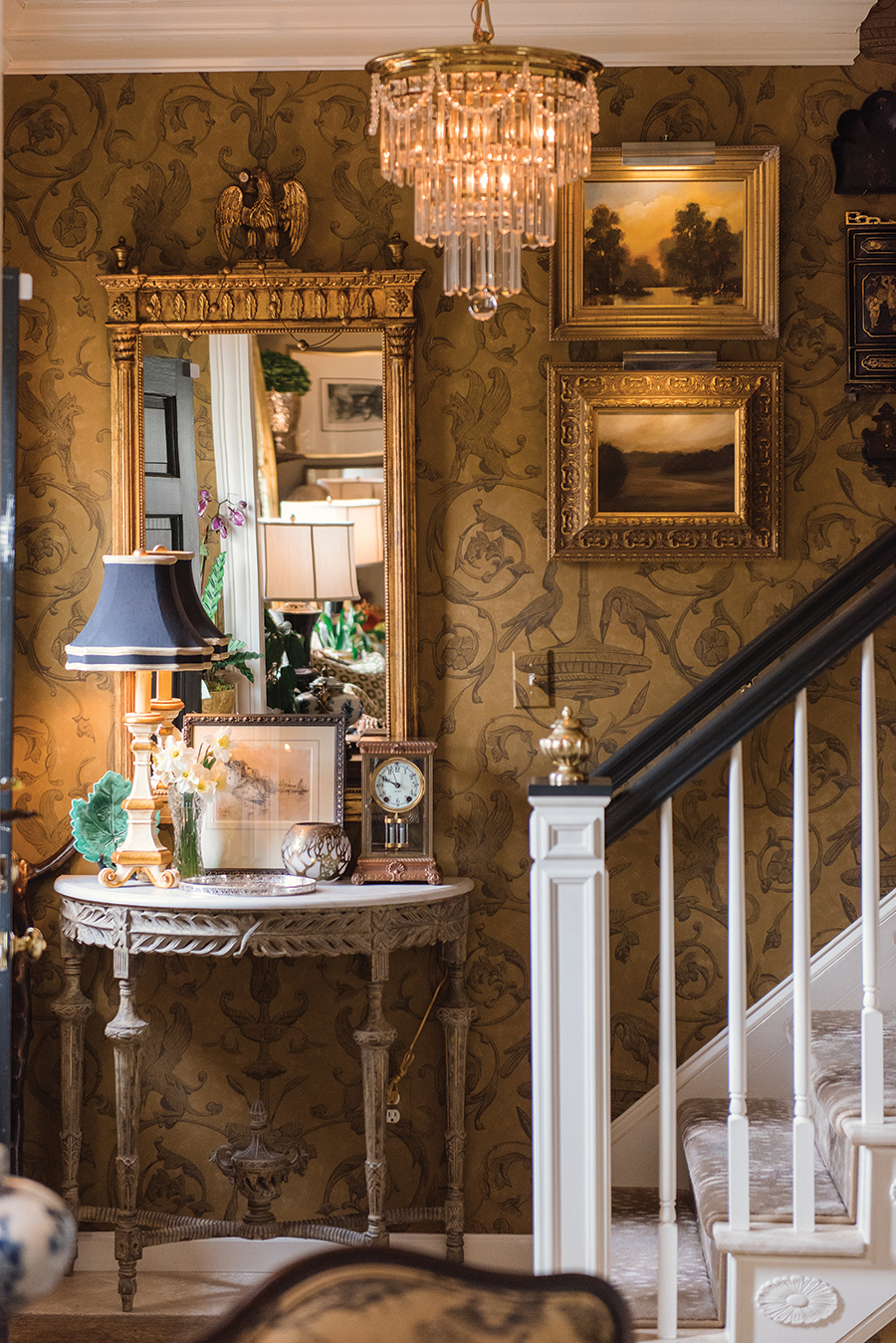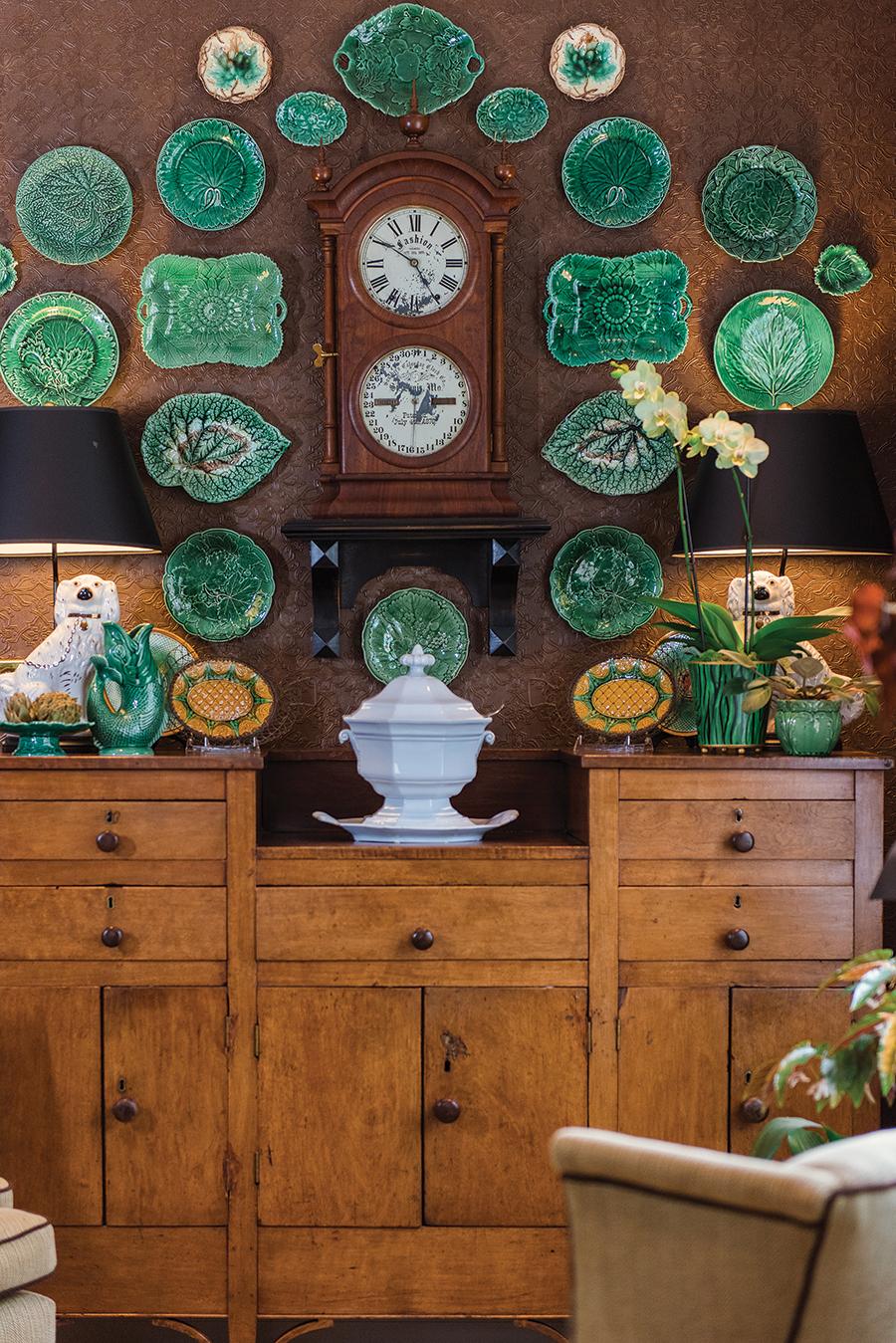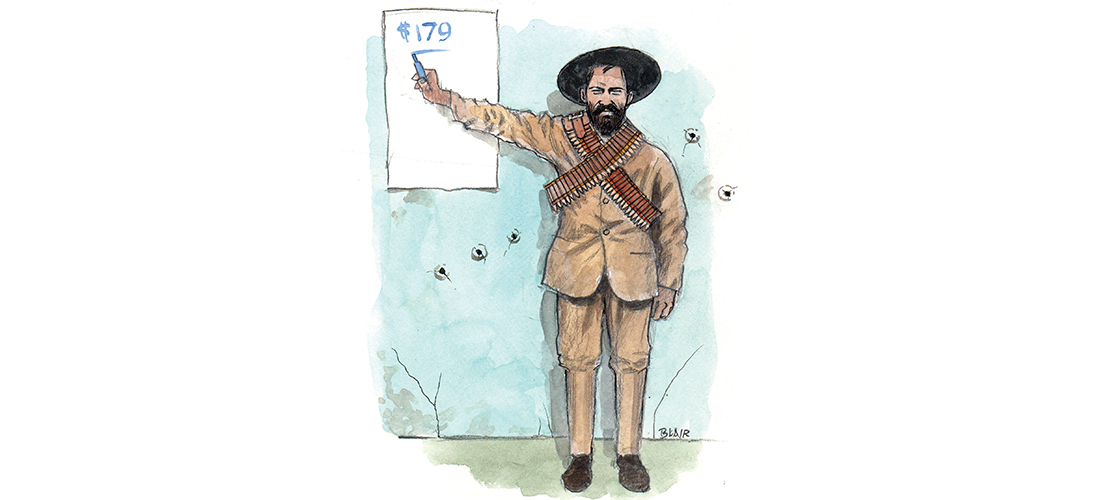With ingenuity and a homegrown talent for doing it yourself, a Greensboro designer and her husband make their subdivision home a one-of-a-kind gem
By Maria Johnson • Photographs by Amy Freeman
Linda and John Oskam, who slept in a ground-floor master suite, knew it was time to move from their estate home near Winston-Salem when they smelled a foul odor coming from upstairs.
No one used the second floor any more, and the water in one of the toilets had evaporated, allowing sewer gas to escape into the home.
Another sign that it was time for a change: John, an electrical engineer retired from an oil company, was yoked to outdoor projects from sunup to sundown.
It was time to pare down and settle into one level, but unlike the last time they “downsized” — from a 5,200 square-foot behemoth in Greensboro to their Lewisville manse, which weighed in at a mere 4,700 square feet — this time they meant it.
Returning to Greensboro, where Linda had lived after her first marriage, seemed the right thing to do.
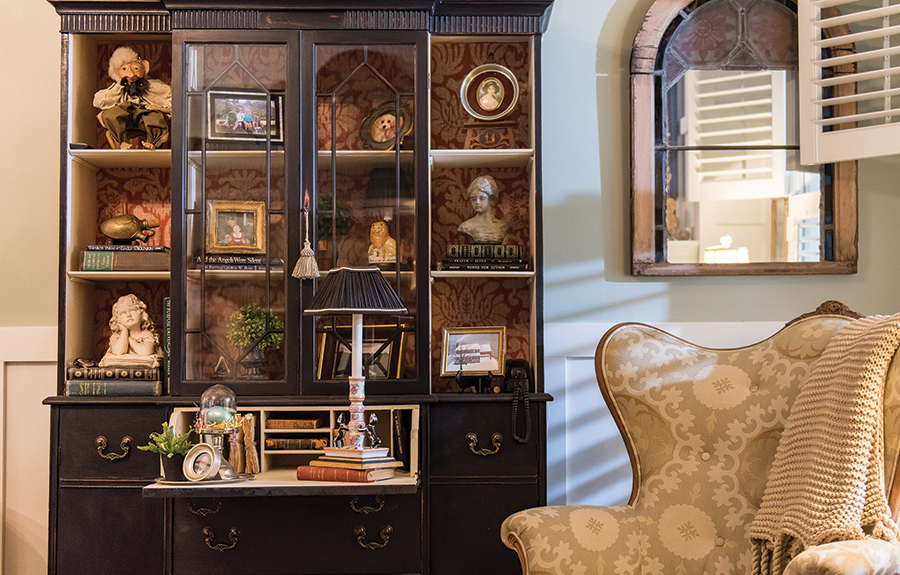
Her son and daughter still lived in the Gate City, and her daughter soon would deliver Linda’s first grandchild.
Plus, Linda, a native of Winston-Salem who’d lived for several years in Reidsville, liked the vibe of Greensboro better than any Piedmont city she’d lived in.
“Greensboro was very, very good to me when I was single,” says Linda, who worked at both Blue Cross and Blue Shield of North Carolina and First Union National Bank in Greensboro.
She met John, a native of Holland, on a blind date. He was living in Durham, where he and his first wife had moved so she could get treatment at Duke University Hospital. After John’s wife died, his landlord fixed him up with Linda, who worked with the landlord’s wife.
“I was about as interested in a blind date as I was in a piece of dust on the floor,” Linda says.
She changed her mind after meeting John, especially after he volunteered to accompany her on decorating jobs. His learning curve was steep.
At one client’s home, he gasped when she lifted a brush, heavy with black paint, to a piece of pretty white furniture she intended to base-coat then marbleize.
We don’t gasp on the job, she told him later.
Point taken, he said.
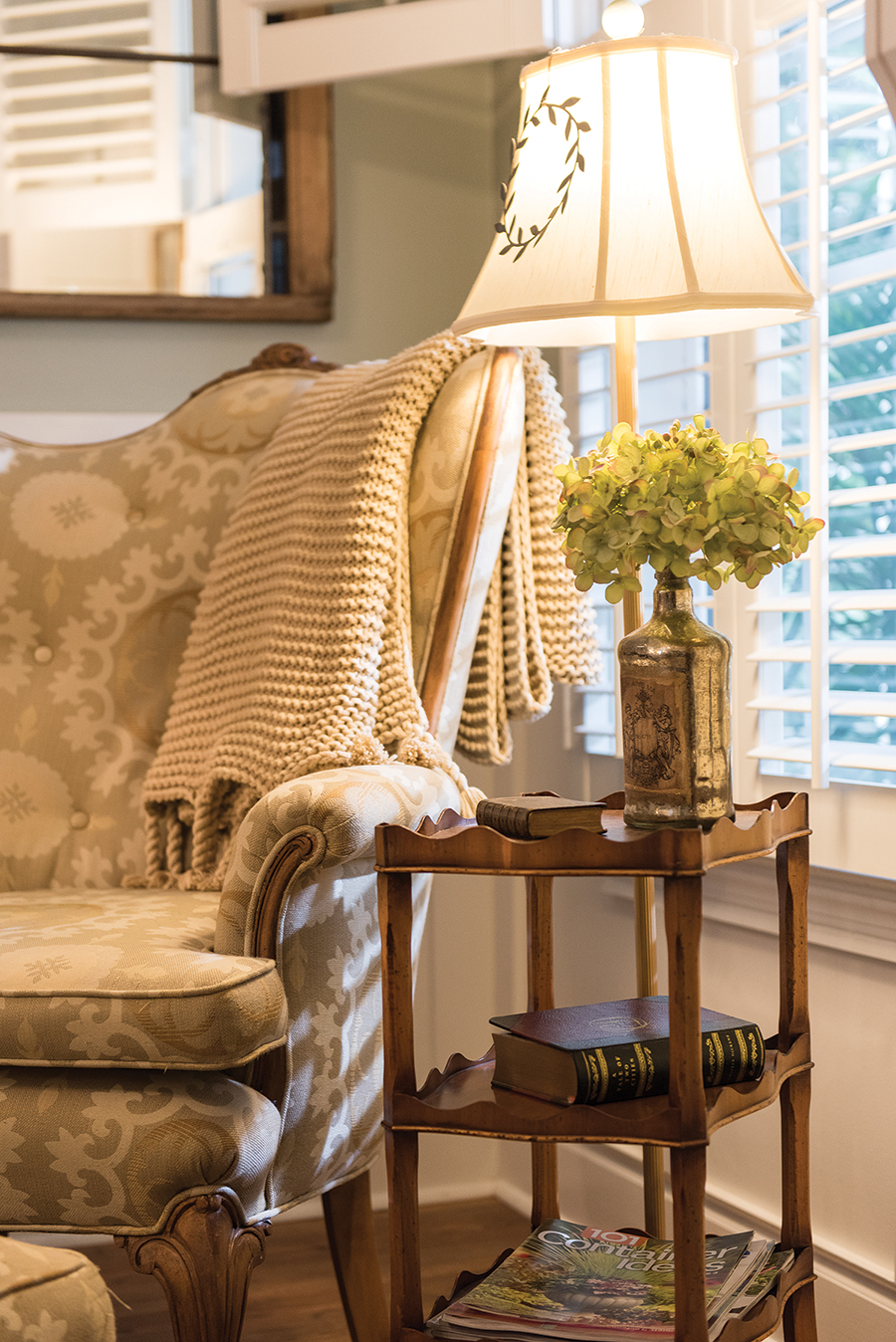
They lived in Greensboro’s Brassfield area for awhile, then shipped out to Lewisville. When they were ready to return to Greensboro, their real estate agent, the late Tom Chitty, showed them a patio home in The Grande, a development built in the early aughts in the Lake Jeanette area.
At 2,000 square feet, the home was much smaller than any place the Oskams had lived, but it ticked several of their “must haves,” including three bedrooms (one master, one guest and one for an office), a two-car garage, and a sliver of outdoor work, the rest being covered by homeowners fees.
The home was freestanding, too, which meant no noise coming from neighbors above, below or beside.
Moving into a development — the kind built by a single builder with slightly different plans and elevations — would be a sharp departure from the high-end custom homes they’d lived in.
“We’d had two really fine homes, and here we were, living in a tract home,” Linda says.
Did they have a problem with that?
“No,” they say in unison.
“This is where we should have been all along,” says John.
But Linda was determined that, while their home’s exterior might not be unique, the interior would be.
The result: an English-flavored nest that glows with gilt and antiques but feels more “sit a spell” than stuffy.
“We have neighbors come in here and say, ‘We have this plan. How come ours doesn’t look like this?’” says Linda.
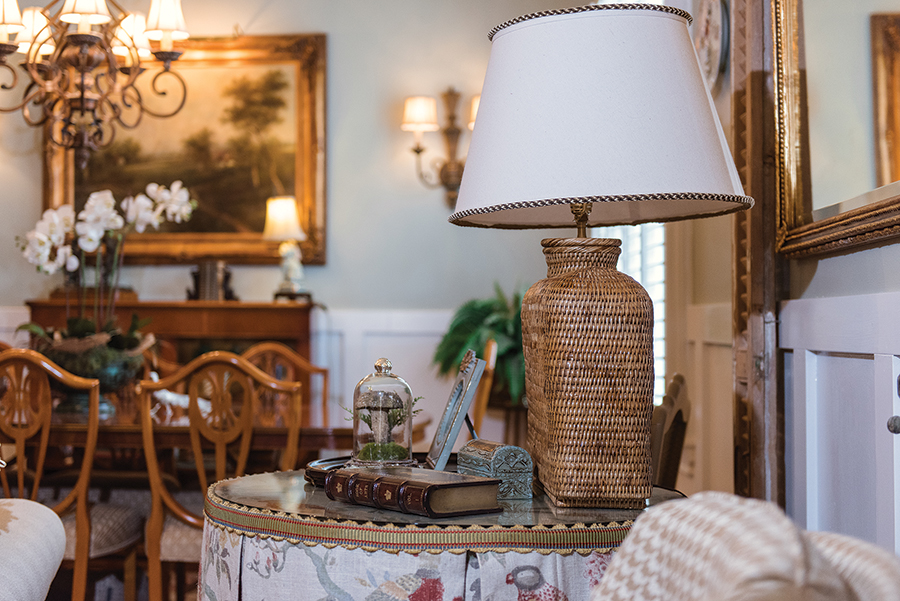
To achieve the wow factor, she applied skills gleaned from more than 30 years of interior designing and faux finishing, first for herself and then, after her divorce, as a sideline to her full-time jobs.
She never has advertised her design work, but she stays busy.
“It’s all word of mouth,” she says.
Part showplace, part petri dish, the Oskams’ home shows what clever designers — and do-it-yourselfers with imagination and patience — can do on a budget.
“There are a lot of things you can do inexpensively and have it look great,” Linda says.
The best example is their living area, which anchors the back of the home and answers to a central fireplace.
Above the fireplace hangs what looks to be a nice reproduction of a Mary Cassatt painting. Truth be told, it’s a poster that Linda mounted on a canvas and brushed with clear acrylic gel using the same size brushes that she imagined Cassatt used. Linda bought a sculpted gold frame — “The frame cost more than the poster and other materials” — and small lamp for the frame.
Another bit of ingenuity: She goosed an antique secretary by cutting up a remnant of coral-and-beige damask and using double-sided tape to stick the rectangles to the back of compartments in the hutch.
She points to a tiered end table she snared at a local consignment shop for about $40. The traylike top, made of yew wood, was badly marked by water. “You couldn’t have sanded it out,” Linda recalls.
Her solution: Trace a template of the top, buy a square of dark vinyl tile at a home improvement store, use the template and a utility knife to cut the tile, and presto, a fresh top that stands up to cups of hot coffee and glasses of chilled wine, no coasters needed.
Nearby is another victory: a lozenge-shaped wicker lamp. Linda paid $19.99 for the busted base at a consignment store. She took it to her favorite lamp shop, where they repaired the base. Linda bought a new shade and hot-glued trim around the top and bottom edges. The lamp sings on pitch with its backdrop, an expensive gold-leaf mirror flanked by a pair of skinny, rustic shutters.
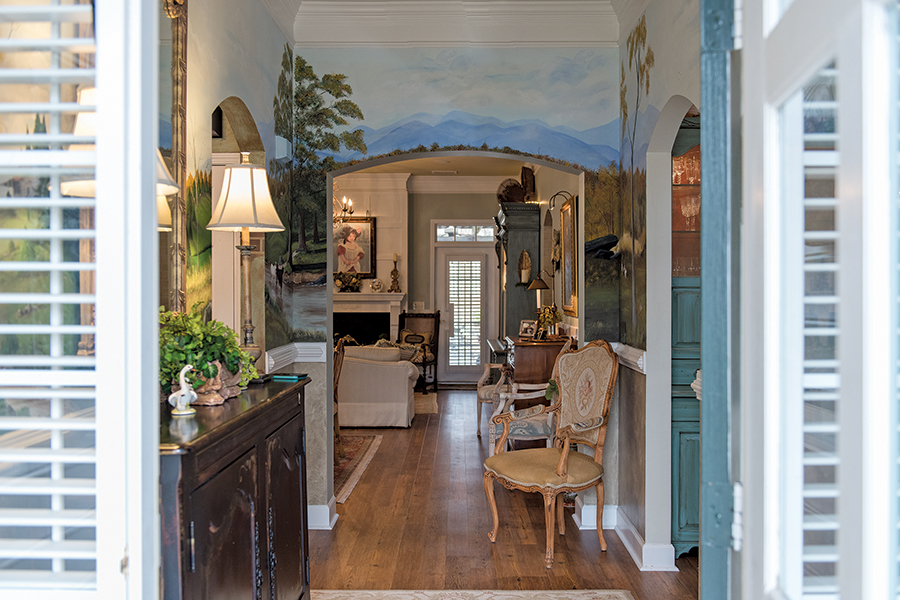
“There’s still dirt on those shutters,” Linda notes, pleased at the harmony of disparate styles and finishes. “I like things that are different.”
And things that are used in ways not originally intended. Mind you, this is a woman who once dragged a highboy from a client’s bedroom, down the stairs and into the living room, where she pronounced it the room’s new focal point.
“I tell people, ‘You gotta get out of your box and use things in different ways,’” she says. “Ideas are everywhere.”
You can start by imagining new places and uses for pieces you already own, she says.
“I tell my clients, ‘Before we go shopping, let’s go shopping in your house and see what you got.’ I’ll say, ‘What are you married to? What do you really love?’ and I’ll spin off that. If you love something, you can find a place for it.”
Another Linda tenet: Invest in a few well-made pieces, then fill in around the edges with less costly finds. People will notice the expensive pieces, and the halo effect will spread to surrounding items.
She gives the example of her Ethan Allen sofa, which she bought new when she was single, paying $25 a month. She has recovered it three times.
A high-end, glass-topped LaBarge coffee table sits before the sofa, near a massive Century Furniture bookcase that has been reincarnated as an entertainment center. The Oskams hired a carpenter to reconfigure the shelves for a flat-screen TV, then Linda got to work. She lightened the dark wood finish — and therefore the visual weight — with eggshell blue chalk paint, coats of brown and clear wax, and gold leaf accents.
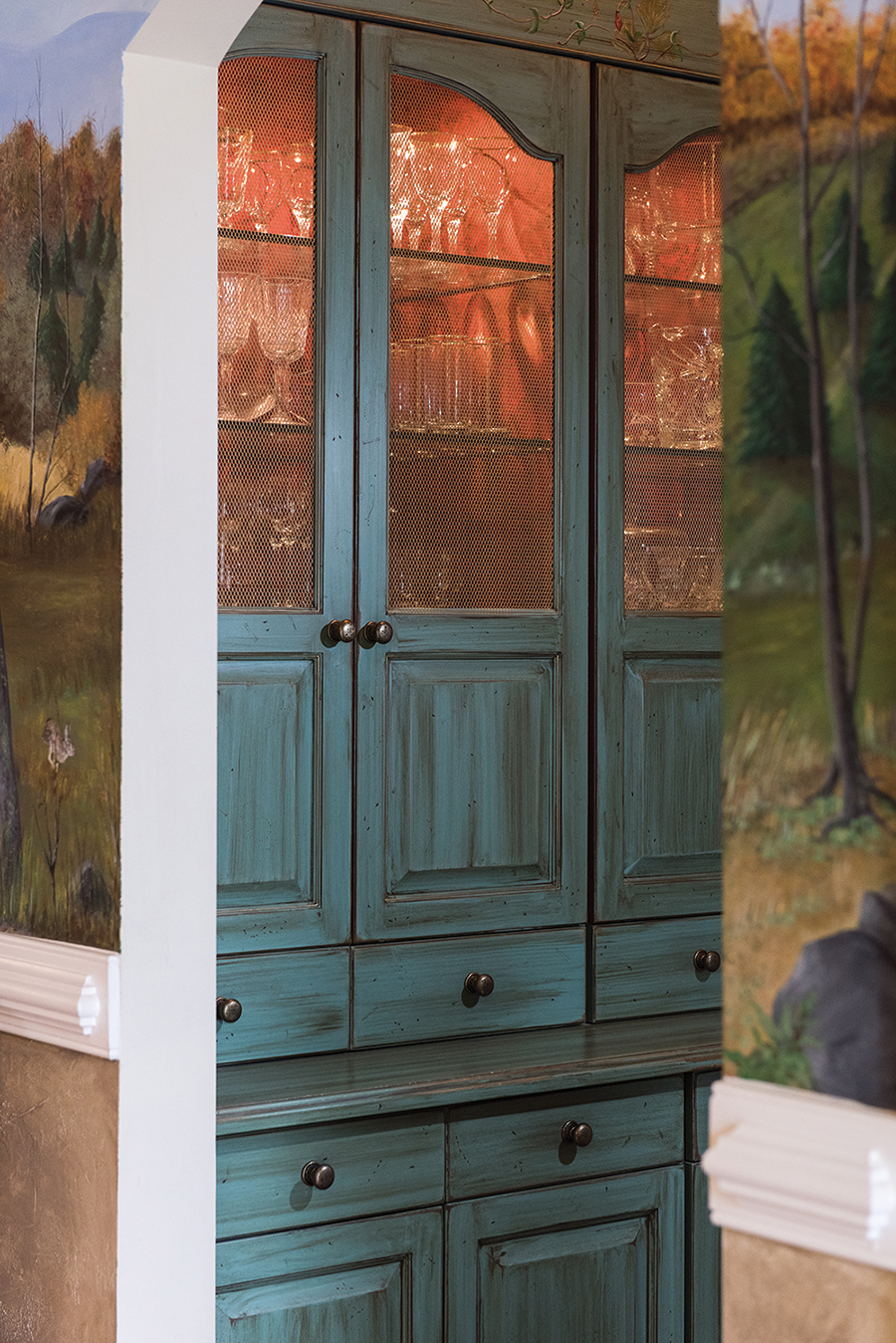
According to Linda, people who are downsizing often goof by tossing all of their big furniture.
“If you put small furniture in a small room, it’s gonna look small,” she says.
Hang on to a few linebackers, she advises, and use them sparingly. They create the illusion of space.
She employs other visual tricks in their home: In John’s office, the smallest bedroom, she hung the curtains high and painted the crown molding the same deep teal as the walls, lifting the eye and making the room look taller.
For truly tight spaces, she suggests built-in furniture, such as the china cabinet that she and John commissioned for the niche once filled by washer and dryer.
When a carpenter was done with the boxes, Linda distressed the raw wood and painted it.
“I beat the you-know-what out of it,” she says.
They slid the washer and dryer to another side of the utility room, where John built a wall-to-wall desk for Linda in front of a south-facing window.
“If I have to draw a floor plan bigger than this desk, I have to go the kitchen,” Linda confesses.
She turned loose in the kitchen, too, making sure no one would mistake it for a tract-house galley.

She faux-painted the white fiberboard cabinets, slathered the walls with sand paint and troweled it for texture, and created faux brick walls by taping off rectangles, brushing them with joint compound, then removing the tape and painting the “bricks.”
More faux shows up in John’s office, where Linda cribbed the wainscoting from the social lobby of Greensboro’s O.Henry Hotel. John bought some unfinished wood molding, used a router to shape the edges, and tacked it to the drywall. Linda distressed the molding by stabbing it with a screwdriver, then she painted the whole thing to resemble knotty wood. The knotholes are her thumbprints in brown glaze.
Her passion for paint spilled into the foyer, where she covered every wall with a mural inspired by trips to the North Carolina mountains? Rows of Christmas trees, hay bales, and undulating blue horizons mix with hounds, horses, cows and streams. Linda stands ready to amend the murals, as she did when her grandson pointed out that the cows did not have tails.
Dab-dab, stroke-stroke. Tails.
Need to see more creativity? Follow Linda to the master bathroom, where old door knockers serve as towel holders. An iron hand pins a towel next to the shower.
Another knocker, by the vanity, wears the face of a soul who looks none too happy about his stint in the linen department.
“My son says it looks like Jacob Marley’s face in the door knocker in that scene in A Christmas Carol,” Linda allows.
She sweeps by a favorite antique on her way out of the bedroom: a curvy chair with a solid, polished maple back and a wooden arm on one side. It’s a hoop chair, made for women wearing hoop skirts.
“People say, ‘Linda, I want that chair.’ I say, ‘I don’t think so,’ “she says merrily.
Time to go outside.
One tough thing about downsizing was losing space for entertaining, Linda says, so she and John created a huge outdoor living space dotted with iron patio sets.
Using lumber he ordered from a home improvement store, and working from the garage, John built a 60-foot-by-20-foot arbor over a concrete patio stamped and painted to look like Pennsylvania bluestone. John also built freestanding wooden closets — onto which Linda painted a couple of topiaries — to store garden supplies. To block the sun, he raised a wall of shutters and lattice — and wired the wall for 110-volt current. We see you, electrical engineer.
Next, they trained English ivy onto the lattice. The ivy fanned into a plush green wall. For sparkle, Linda set a mirror and lanterns into the foliage. A contractor stacked fieldstone for a pool and fountain next to the patio.
Standing in this botanical room, enveloped by gurgle and green, you’d never guess that you were visiting a “tract house.”
Mission accomplished, Linda says, but only with the help of her secret weapon, who stands nearby, hands clasped behind him, a proper gentleman.
“I want her to succeed,” says John, who stands ramrod straight at age 89, thanks to daily walks and calisthenics.
“He’s very supportive,” says Linda, a relative puppy, who turns 74 this month. John basks in the appreciation.
“That’s how she gets me,” he says.
“And it works every time.”
“And I don’t mind.” OH
Maria Johnson is a contributing editor of O.Henry. She can be reached at ohenrymaria@gmail.com.




